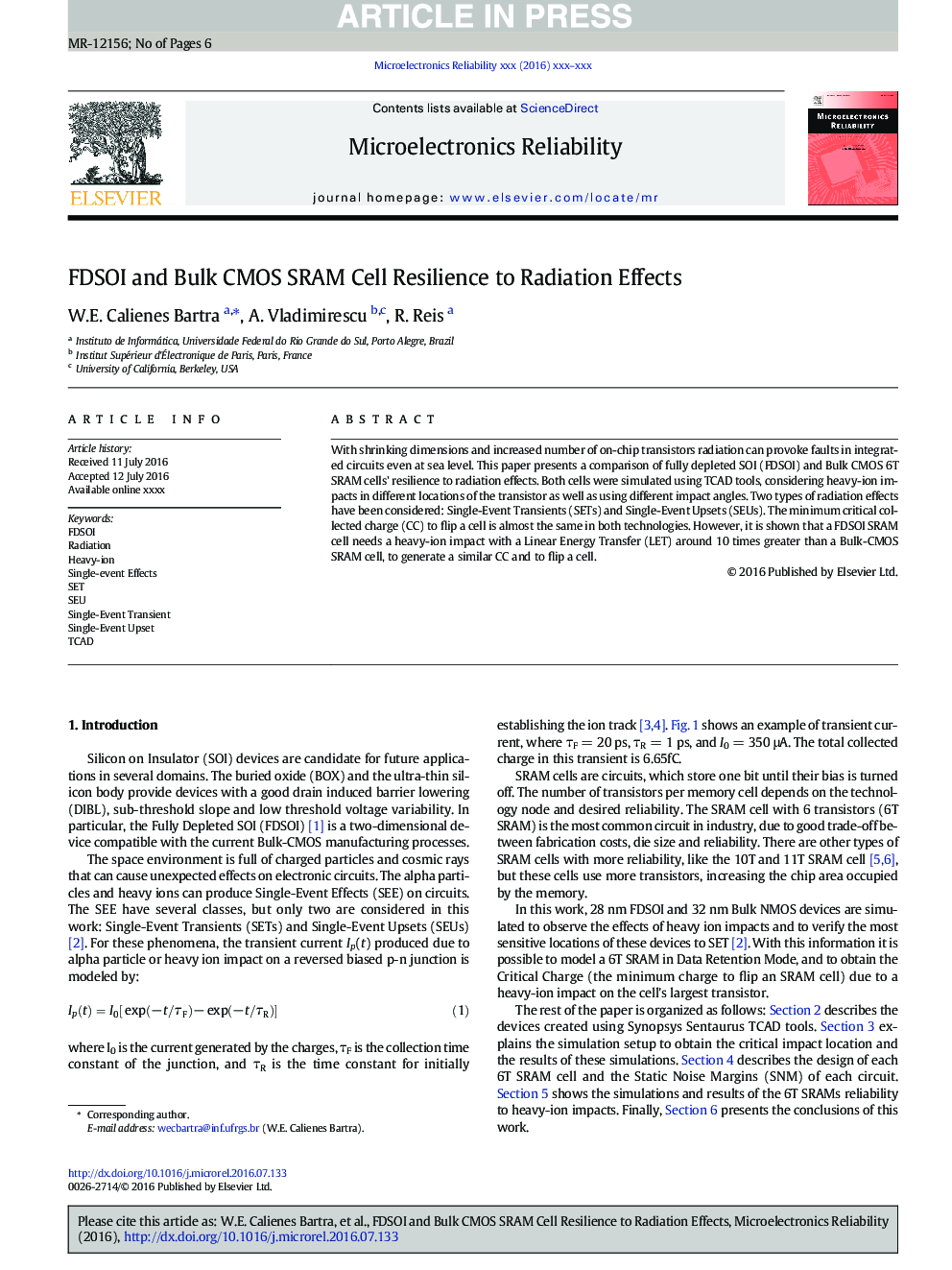| Article ID | Journal | Published Year | Pages | File Type |
|---|---|---|---|---|
| 4971825 | Microelectronics Reliability | 2016 | 6 Pages |
Abstract
With shrinking dimensions and increased number of on-chip transistors radiation can provoke faults in integrated circuits even at sea level. This paper presents a comparison of fully depleted SOI (FDSOI) and Bulk CMOS 6T SRAM cells' resilience to radiation effects. Both cells were simulated using TCAD tools, considering heavy-ion impacts in different locations of the transistor as well as using different impact angles. Two types of radiation effects have been considered: Single-Event Transients (SETs) and Single-Event Upsets (SEUs). The minimum critical collected charge (CC) to flip a cell is almost the same in both technologies. However, it is shown that a FDSOI SRAM cell needs a heavy-ion impact with a Linear Energy Transfer (LET) around 10 times greater than a Bulk-CMOS SRAM cell, to generate a similar CC and to flip a cell.
Related Topics
Physical Sciences and Engineering
Computer Science
Hardware and Architecture
Authors
W.E. Calienes Bartra, A. Vladimirescu, R. Reis,
